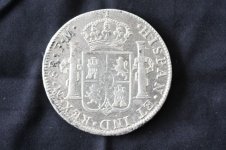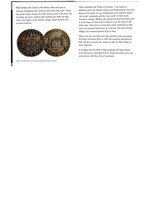divewrecks
Bronze Member
- Sep 7, 2004
- 1,038
- 26
- Detector(s) used
- Minelab Explorer SE (land), Aquapulse AQ1B (sea), Fisher CZ-20 (water, beach), Fisher 1266X (woods)
This came from a book published in 1913 on Panama I found in Google books...
PIECE OF EIGHT "Our dollar sign is derived from the sign used to indicate " pieces of eight" in the old account books; an eight canceled with two vertical lines (to keep it from being added up with the other figures), thus: 8. This sign became $, because it is quicker and easier to write an S, than an 8."
Stan
PIECE OF EIGHT "Our dollar sign is derived from the sign used to indicate " pieces of eight" in the old account books; an eight canceled with two vertical lines (to keep it from being added up with the other figures), thus: 8. This sign became $, because it is quicker and easier to write an S, than an 8."
Stan





